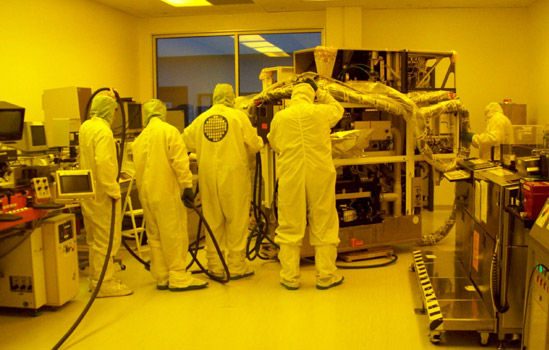Semiconductor equipment donated to microelectronic engineering program
Advanced model of stepper to be used as teaching tool for integrated circuits
The Semiconductor and Microsystems Fabrication Laboratory, located in the Kate Gleason College of Engineering, recently received a donation from Micron Corp. of a wafer stepper, an advanced imaging system for the manufacture of integrated circuits.
Micron Corp., a longtime supporter of the microelectronic engineering program, recently donated a wafer stepper to the Kate Gleason College of Engineering. The equipment, the ASML PAS 5500/200, an advanced imaging system for the manufacture of integrated circuits valued at more than a half-million dollars, was installed in the Semiconductor and Microsystems Fabrication Laboratory in Engineering Hall.
“This is a better, more capable system than our current equipment, with higher resolution,” says Karl Hirschman, professor of microelectronic engineering. “It is still a workhorse in the semiconductor industry today.”
Hirschman, the Micron Professor, and director of the college’s Semiconductor and Microsystems Fabrication Laboratory says ASML Inc., a company based in the Netherlands, was an essential partner in this donation, providing personnel time and expertise for system installation and qualification, and the software license required to operate the system.
The wafer stepper is a photolithography machine that is essential to the development of integrated circuits. It replicates circuit images onto the silicon wafer, making detailed patterns at the sub-micron level. This complex process is the means for defining the tiny transistors that make up computer processors and microchips with extensive memory capacity.
Students have been using the new system since the start of the academic year in a fabrication laboratory course taught by Lynn Fuller, professor and founder of RIT’s program in microelectronic engineering. Use of the system required new photomasks, fabricated in the Semiconductor and Microsystems Fabrication Laboratory on larger quartz substrates, and new stepper software jobs to be written. The system will also enable research activities with students at the undergraduate, master’s and Ph.D. level.
“This system provides an unmatched lab experience to our students and will continue to serve RIT for the next decade,” says Fuller.










